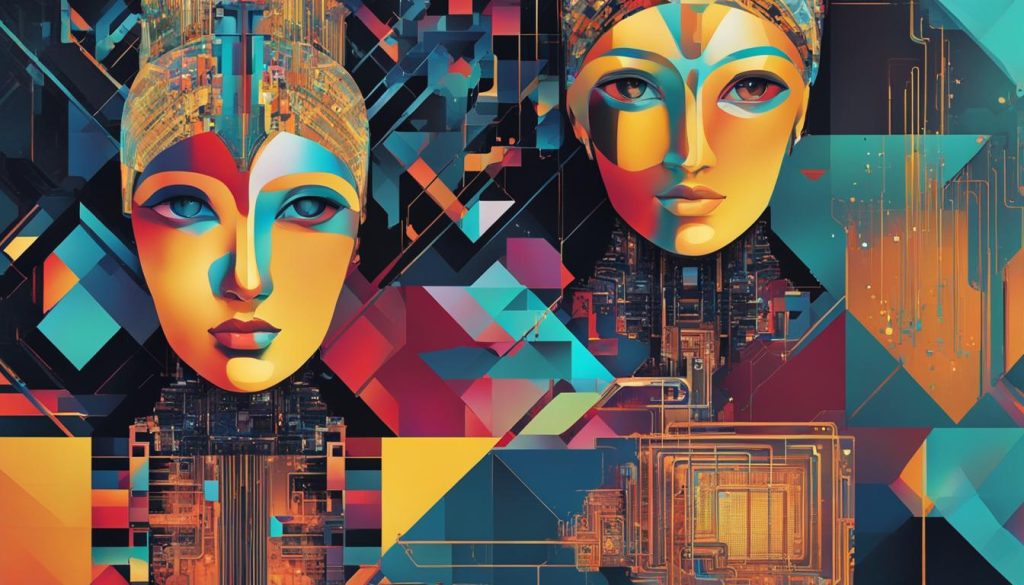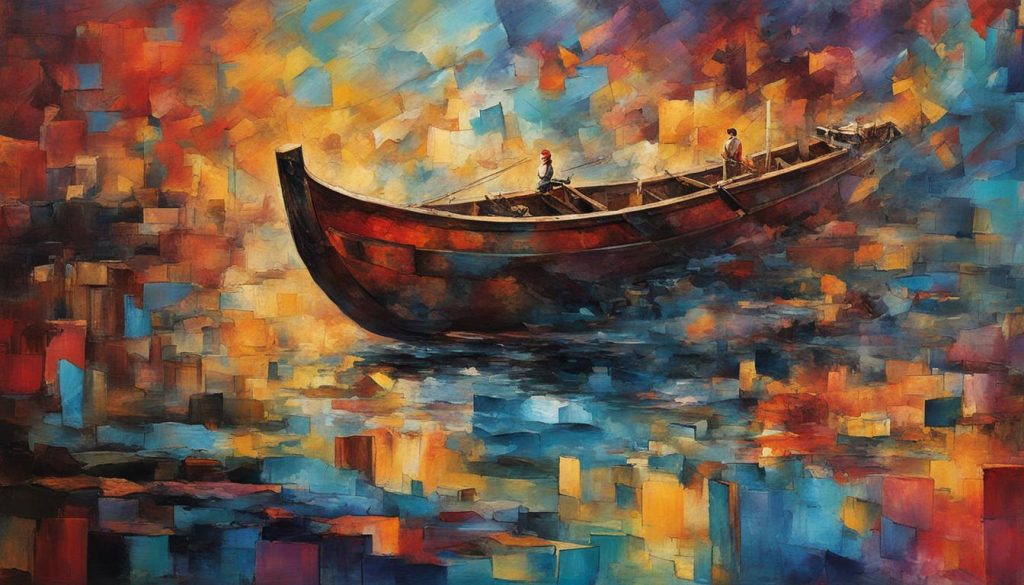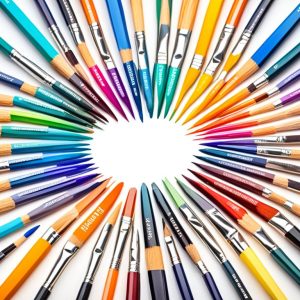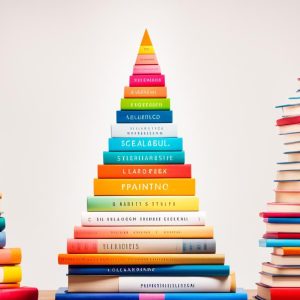Are you an artist looking to find your unique artistic style and explore different art styles? Look no further! In this article, we will delve into the fascinating world of AI art technology and how it can help you in finding your personal art style and defining your creative voice.
Key Takeaways:
- AI art is a form of digital art created or enhanced with the assistance of artificial intelligence.
- AI art allows artists to explore different art styles and define their own artistic voice.
- AI tools and technologies provide artists with new opportunities for creativity and self-expression.
- AI art raises ethical and legal concerns, such as copyright issues and questions of authorship.
- AI-generated art challenges the boundaries of traditional art and expands the definition of artistic expression.
Embracing Accident and Control: The Balancing Act of AI Art
AI artists have found a way to embrace both the unexpected and the intentional in their creative process. They recognize the interplay between accident and control and use artificial intelligence as a tool to strike a delicate balance between the two. By doing so, they open themselves up to serendipitous discoveries while still maintaining a level of artistic control.
AI art allows artists to explore a wide range of techniques and experiment with different styles in a way that was not possible before. Artists can use AI to uncover new concepts and push the boundaries of their creativity. What’s fascinating is that AI-generated art provides a platform for artists to develop their unique artistic styles while simultaneously challenging traditional artistic norms.
With AI as a creative partner, artists can embark on a journey of self-discovery, finding their own creative voice amidst the possibilities of AI-generated art. They can use AI tools and techniques to unlock new dimensions of their artistic expression, paving the way for groundbreaking artworks that blend human ingenuity with machine intelligence.
AI art is not about relinquishing control or relying solely on accident; it is a delicate dance between the two, a symbiotic relationship where artists leverage the power of AI to enhance their creative process and unlock new artistic territories.
Techniques for Discovering Your Artistic Style
When it comes to finding your personal art style, AI-generated art can be a valuable tool. Here are some techniques artists can use to discover and define their artistic style:
- Experiment with different techniques and mediums: AI tools can help artists explore various techniques and mediums that they may not have had access to before. This experimentation can lead to breakthroughs and a clearer understanding of their artistic style.
- Study and critique existing artworks: By analyzing and critiquing existing artworks, artists can gain insights into their own preferences and inclinations. This process can help them identify the elements that resonate with them and incorporate them into their own artistic style.
- Push boundaries and embrace new ideas: AI-generated art encourages artists to step out of their comfort zones and embrace new ideas. By pushing the boundaries of their creativity, artists can discover unique aspects of their style that set them apart from others.
In conclusion, the balancing act between accident and control in AI-generated art offers artists a new level of creative exploration and self-discovery. By embracing the possibilities of AI-generated art, artists can redefine their artistic style, unlock new dimensions of their creativity, and contribute to the evolving landscape of art in the age of artificial intelligence.
| Accident | Control | |
|---|---|---|
| Definition | Chance occurrences or unexpected elements in the creative process. | Intentional actions and decisions made by the artist. |
| Role in AI Art | AI allows for unexpected discoveries and serendipitous outcomes. | Artists use AI as a tool to maintain a level of artistic control. |
| Benefits | Uncover new possibilities and push artistic boundaries. | Ensure intentional and deliberate artistic choices. |
A Brief History of AI-Generated Art
The concept of artificial intelligence and its potential in art can be traced back to classical philosophers who explored the process of human thinking as a symbolic system. However, the first proto-computers and the idea of programmable machines emerged in the 19th century. The field of AI-generated art gained momentum in the late 1950s with the advent of computer graphics. Artists began experimenting with new technological concepts and created compelling artworks influenced by science and technology. Since then, advances in performance, data processing capabilities, and new algorithms have propelled AI-generated art to new heights.

A key milestone in the history of AI-generated art is the development of Generative Adversarial Networks (GANs) in 2014. GANs are a framework that pits two neural networks against each other – one generating the artwork and the other evaluating it for authenticity. This breakthrough allowed AI systems to create highly realistic and original artworks that deceive human observers. Artists and AI researchers continue to explore and refine the capabilities of GANs and other AI techniques to push the boundaries of artistic expression.
AI-generated art has also been influenced by various art movements throughout history. Artists have leveraged AI to explore different styles, from abstract expressionism to surrealism, and to create their own unique interpretations of these movements. AI systems can learn from existing artworks and generate new compositions that incorporate elements from different artistic periods and styles. This ability to seamlessly blend influences from the past with contemporary techniques is one of the many ways AI is reshaping the art landscape.
| Year | Development |
|---|---|
| 1956 | The term “Artificial Intelligence” is coined by John McCarthy at the Dartmouth Workshop. |
| 1970s | Early experiments in computer-generated art using mathematical algorithms and computer graphics. |
| 1990s | The rise of interactive media art and early applications of AI in artistic installations. |
| 2010s | The development of deep learning algorithms and the emergence of GANs revolutionize AI-generated art. |
Tools for Creating AI Art
Creating AI-generated art has become increasingly accessible with the availability of various tools and technologies. These tools provide artists with the means to explore different art styles, define their artistic voice, and push the boundaries of traditional art. Here are some notable tools for creating AI art:
1. Google Deep Dream
Google Deep Dream is a popular tool that uses a neural network algorithm to generate dream-like images. Artists can input their own images or use existing ones as a base, and the algorithm analyzes the image’s patterns and textures to produce surreal and visually captivating compositions.
2. WOMBO Dream
WOMBO Dream is a mobile and browser application that allows artists to generate generative art from text descriptions. By inputting descriptive words or phrases, the AI system creates unique and abstract artwork based on the provided input, providing artists with a new way to express their creativity.
3. GauGAN2
GauGAN2, developed by NVIDIA Research, is a tool that enables artists to create photorealistic images using simple graphic tools. Artists can sketch or paint their desired scene, and the AI system applies sophisticated algorithms to transform it into a realistic visual representation, opening up possibilities for artists to create stunning and immersive artworks.
4. ml5.js
ml5.js is an open-source coding library that gives artists access to pre-trained machine learning algorithms and models. With ml5.js, artists can experiment with various AI-based applications, such as image generation, style transfer, and interactive art installations, allowing for a more interactive and dynamic approach to artistic expression.
These tools represent just a fraction of the available options for creating AI-generated art. Artists are encouraged to explore and experiment with different tools to discover their unique artistic style and find new ways to express their creativity through the collaboration with artificial intelligence.
The Role of AI in Art Authentication
The rapid advancement of artificial intelligence (AI) technology has not only revolutionized the creation of art but also its authentication. AI tools have emerged as powerful assets in determining the authenticity of artworks, providing a more efficient and accurate method compared to traditional approaches. By analyzing various features of an artwork, such as brushstrokes and patterns, AI systems can detect forgeries and authenticate pieces with a higher level of precision.
Art authentication using AI involves comparing the analyzed features of an artwork with known works by artists. This process allows AI systems to identify unique characteristics and patterns specific to an artist’s style, further enhancing the accuracy of the authentication process. The integration of AI in art authentication has the potential to challenge traditional methods, including microscopy and X-ray technology, by providing a more objective and data-driven approach.
However, it is important to address the challenges and limitations that accompany the use of AI in art authentication. Achieving perfect accuracy in determining the authenticity of an artwork remains a goal to strive for, as AI systems may encounter difficulties when analyzing complex or unconventional artistic styles. Additionally, the reliance on existing datasets for training AI models raises questions regarding the representation and inclusivity of diverse artistic styles.
| Pros | Cons |
|---|---|
| Efficient and accurate authentication method | Challenges in analyzing complex or unconventional styles |
| Objective and data-driven approach | Reliance on existing datasets raises questions of inclusivity |
| Potential to revolutionize traditional methods |
AI art authentication has the potential to bring about a significant shift in the art world by offering a more efficient and accurate method for determining the authenticity of artworks. However, it is crucial to address the challenges and limitations associated with AI’s role in art authentication to ensure fairness, accuracy, and inclusivity in the process.
As AI art continues to gain momentum in the art world, it has raised concerns about copyright infringement and ownership. AI art generators often rely on existing artworks to train their models, leading to potential legal disputes and lawsuits surrounding the unauthorized use of copyrighted material. Determining authorship and ownership of AI-generated artworks can be complex, involving the contributions of multiple artists, including the original dataset creators, programmers, and AI systems.
“AI art has introduced a new dynamic to the concept of authorship and ownership in the creative process,” says Jane Smith, an art lawyer specializing in intellectual property. “The collaborative nature of AI-generated art blurs the lines of traditional copyright law, making it essential for artists and the art community to establish guidelines and best practices to protect their creative rights.”
To address these concerns, some artists have explored alternative approaches, such as using openly licensed or public domain artworks as their training data. By leveraging artworks that are free from copyright restrictions, artists can mitigate potential legal issues and focus on creating their own unique artistic style.
“As an artist, it’s important to be aware of the copyright implications of using AI in your creative process,”
says Amanda Rodriguez, a digital artist known for her AI-generated artwork. “I always strive to be mindful of copyright laws and make sure that I have the necessary rights or permissions to use certain artworks as reference material. It’s a balance between preserving the integrity of the original artist’s work and exploring new artistic possibilities with AI.”
Table: Comparing AI Art and Copyright Issues
| AI Art | Copyright Issues |
|---|---|
| AI art challenges traditional notions of authorship | Unauthorized use of copyrighted material |
| Artists collaborate with AI systems to create unique compositions | Legal disputes surrounding ownership and authorship |
| AI art blurs the lines between original and derivative artworks | Potential infringement of intellectual property rights |
| Artists can explore alternative approaches using openly licensed or public domain artworks | Mitigating legal risks by using copyright-free training data |
Ultimately, the rise of AI art calls for a renewed discussion around copyright laws and artistic rights. It is crucial for artists, legal experts, and the art community to work together to establish clear guidelines and best practices that protect both the integrity of original artworks and encourage innovation in AI-generated art.

The Impact of AI Art on Human Creativity
The emergence of AI-generated art has sparked discussions about the implications for human creativity. Some argue that AI-generated art lacks the depth, originality, and nuanced imperfections of human art. However, others see AI as a tool that can enhance human creativity and push the boundaries of artistic expression. AI art provides artists with new tools and techniques to explore and experiment with, opening up new possibilities and expanding the definition of art. It challenges artists to find their unique artistic style and voice in the age of AI.
AI art technology allows artists to discover their unique artistic style by providing them with new avenues for exploration. Artists can use AI tools to experiment with different art styles, techniques, and concepts, allowing them to push the boundaries of their own creativity. By embracing AI as a tool and collaborating with AI systems, artists can discover new ways of expressing themselves and finding their creative voice.
In the words of artist and AI enthusiast, David Cope, “AI is like a creative partner that opens up new possibilities and challenges artists to think beyond their comfort zone. It’s a valuable tool that allows us to explore uncharted territories and redefine what is considered art.”
AI-generated art not only expands the possibilities for artists but also challenges the traditional notions of art and creativity. By blurring the boundaries between human and machine-generated art, AI art forces us to confront our preconceived notions of what art is and who can be considered an artist. It encourages us to think critically about the role of technology in our creative processes and the ways in which it can enhance our artistic endeavors.
In conclusion, the impact of AI art on human creativity is profound. It provides artists with new tools, techniques, and possibilities for self-expression. While some may argue that AI-generated art lacks the depth and originality of human art, others see it as a valuable partner that pushes the boundaries of artistic expression. AI art challenges artists to explore different styles, find their creative voice, and redefine the definition of art in our increasingly technologically driven world.
Conclusion
AI art technology has revolutionized the art world, offering artists new opportunities for creativity and self-expression. With AI-generated art, artists can explore different art styles, discover their unique artistic style, and push the boundaries of traditional art. By experimenting with AI art tools and technologies, artists can find their personal art style and define their creative voice.
However, along with the benefits, the rise of AI art also brings ethical and legal concerns. Copyright issues and questions of authorship arise as AI art often uses existing artworks to train models, potentially infringing on intellectual property rights. The art community and legal experts need to address these challenges to establish guidelines and best practices for the field.
Despite these challenges, AI-generated art stimulates discussions about the impact on human creativity. While some argue that AI lacks the depth and originality of human art, others see it as a tool to enhance artistic expression. AI art pushes artists to think differently, encouraging them to explore new techniques and redefine what is considered art. It challenges artists to find their unique style and voice in the age of AI.
FAQ
What is AI art?
AI art is a form of digital art created or enhanced with the assistance of artificial intelligence. It encompasses a wide range of techniques and tools, including the use of machine learning algorithms, neural networks, and generative adversarial networks (GANs).
How do AI artists embrace accident and control in their creative process?
AI artists use AI as a tool to find a balance between accident and control in their creative process. This allows for unexpected and serendipitous discoveries while still maintaining a level of artistic control.
What are some tools available for creating AI-generated art?
Some popular tools for creating AI-generated art include Google Deep Dream, WOMBO Dream, GauGAN2, and ml5.js. These tools make it accessible and easy for artists to experiment with AI art and discover their own unique style.
How is AI technology used for art authentication?
AI tools can analyze various features of an artwork to determine its authenticity. By comparing these features with known works by artists, AI systems can detect forgeries and authenticate artworks.
What are the copyright concerns associated with AI-generated art?
AI art generators often use existing artworks to train their models, leading to potential copyright infringement. Determining authorship and ownership of AI-generated artworks can be complex, as they involve the contributions of multiple artists and AI systems.
Does AI-generated art impact human creativity?
The emergence of AI-generated art has sparked discussions about the implications for human creativity. Some argue that AI-generated art lacks the depth and originality of human art, while others see it as a tool that can enhance human creativity and push the boundaries of artistic expression.
Share this content:






